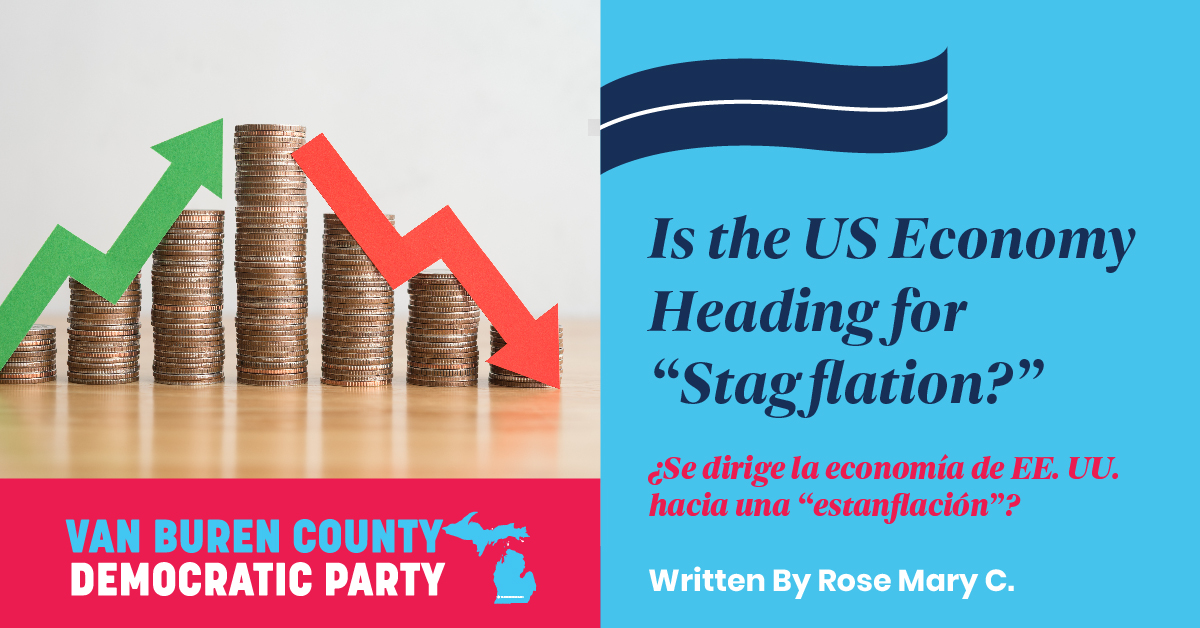
Is the US Economy Heading for “Stagflation?”
The US is in unchartered territory as our government continues to shock the world and us, its citizens, with job reductions and tariffs imposed on our “friends” and “enemies” alike. Public sentiment which is a key leading indicator of consumer confidence is at a 12 year low. While we could be headed for “stagflation,” we remain hopeful that we will face “stagflation-lite” and be able to recover from it more quickly.
Many of us are familiar with the term “recession” but not many of us have heard of “stagflation.”
A recession is a period of declining economic activity. It includes
- rising unemployment,
- reduced consumer spending
- a slowdown in business investment.
Inflation in a recession decreases as demand for goods and services declines. Recession can be controlled by lowering interest rates or increasing government spending to boost demand.
Stagflation, on the other hand, is a rarer trifecta of
- high inflation,
- stagnant economic growth
- rising unemployment.
- Inflation remains persistently high which makes it difficult to fix with traditional tools. For example, raising interest rates to fight inflation can worsen unemployment and slow growth even further.
Stagflation is often caused by supply -side shocks such as
- sudden increase in oil prices,
- disruptions in production
- the unknown impacts of tariffs with our usual trading partners. These conditions would make stagflation much more difficult to resolve.
Fifty years ago, in the 1970’s, the US was hit with the worst economic collapse since the Great Depression. Could this be happening to us again?
Economists are divided on whether we are headed for full on stagflation or “stagflation-lite” since much of what is happening in the economy right now is really our own doing. Let’s look at the forces impacting our economy right now:
Crude Oil Prices: Although only modestly increasing right now, crude oil prices could rise more sharply if, for example, there are conflicts in the Middle East or if OPEC decides to cut production. A stronger than anticipated recovery of major economies like China and India could strain oil supply and raise prices. Interestingly, both China’s and India’s recoveries from Covid are exceeding expectations with predicted growth rates of 5% and 6.4%, respectively.
Inflation: While inflation is currently stable and holding at around 2.9%, that is still above the Fed’s target of 2%.
- Inflation may go higher if there are supply chain disruptions or if energy prices go up.
New on the horizon are the Tariff Wars. We cannot predict their impact on inflation, but dramatic price increases will disrupt the supply chain, which is why we experienced inflation after the Covid Pandemic. The Global Economy means that all countries are dependent on each other for goods and services.
Unemployment: The current US unemployment rate is 4.1% but projected to be 4.4% by year end. We are reading about massive layoffs in the government sector right now with more on the horizon. This would impact many other segments causing them to furlough their workers as well. The unemployment rate then could go well beyond 4.4% if GDP growth slows or if industries like tech, retail and manufacturing face even greater challenges or if there is a move to tighten monetary policy by increasing interest rates , selling government bonds or banks are required to hold more reserves.
Consumer Confidence: Perhaps the most telling leading indicator of how people are feeling about the economy is the Consumer Confidence Index (CCI). The CCI has dropped to its lowest level in 12 years. The Expectations Index which reflects consumers’ short-term outlook for income, business and labor market conditions dropped to 65.2 which is well below the threshold of 80 that typically signals a potential recession.
- As you might expect, consumer spending although up slightly in January (.2%) will be overshadowed by an anticipated sharp decrease in discretionary spending especially in non-essential items like apparel and electronics.
Polls are fickle and can change month to month but here are some recent approval ratings for Trump’s policies.
- On Wednesday, March 26, the Rasmussen poll shows a 52% approval rating (39% strongly approve) and 47% disapprove (38% strongly disapprove)
- YouGov poll, from data between March 22-25, shows a 48% approval rating, and a 46% disapproval rating. His approval rating dropped 2% since the March 21 update, although more people (6%) were unsure this round, compared to last (3%).
- Morning Consult, a nonpartisan digital media and survey research company, reported a 51% disapproval rating, compared to a 47% approval rating on Monday, March 24.
- On Tuesday, March 25, Reuters/Ipsos said their latest data from March 20-23 showed a higher disapproval rating of 51%, compared to a 45% approval rating. His approval rating went up 1% and his disapproval went down 1% since the March 11-12 survey
The poll also asked respondents whether presidents should obey federal court rulings amid the administration’s battle with a federal judge who suspects it may have defied his order to halt deportations of migrants to El Salvador carried out under a special wartime authority known as the Alien Enemies Act: 82% of respondents said the president should obey court orders, including majorities of both Republicans and Democrats.
- Most voters, 51%, have a somewhat or very negative view of top Trump advisor Elon Musk, according to the findings, while 39% have a somewhat or very positive view.
- Here’s one that has a slight, but important twist and shift. Americans said in November that they expected Trump to change America for the better during his second term (45%) than said they expected him to change America for the worse (33%), slightly more now think he is, in fact, doing the opposite: changing the country for the worse (43%) rather than the better (40%).
Author: Rose Mary C.
